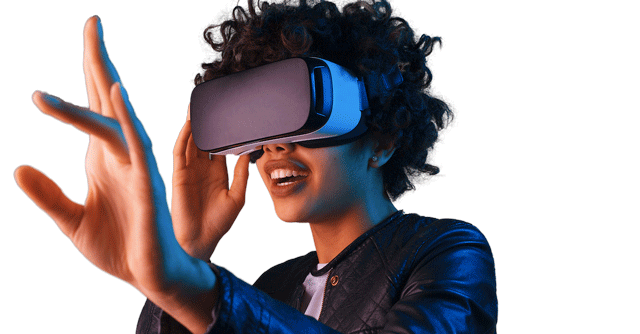
Will 2022 be the year of AR/VR in wearables?


 In August, Thane-based AjnaLens launched enterprise-grade augmented glasses (AR) glasses with a software suite. They can be used by enterprises for training and provide step-by-step guidance to employees using holographic images. Three months later in November, virtual pre-owned cars showroom CarzSo tied up with View360Degrees, a virtual reality startup, to offer a 360 degree virtual car experience to its customers.
In August, Thane-based AjnaLens launched enterprise-grade augmented glasses (AR) glasses with a software suite. They can be used by enterprises for training and provide step-by-step guidance to employees using holographic images. Three months later in November, virtual pre-owned cars showroom CarzSo tied up with View360Degrees, a virtual reality startup, to offer a 360 degree virtual car experience to its customers.
Last year, Reliance Jio showcased their mixed reality (MR) glasses called Jio Glass, which can be used to create a 3D virtual classroom with holographic images. Reliance Jio is working with developers to create more applications for the platform that can be used in other industries too.
These examples may tempt us to assume that augmented and virtual reality (AR/VR) wearables are common place in emerging markets such as India. That's not the case. Their adoption has been limited to a few industries such as automotive, healthcare, manufacturing and defence.

The enterprise segment accounted for 72% of the AR/VR market in 2020, according to a Research and Markets report published in September 2021. Interest in the consumer segment, too, has been limited.
“Helping end users in enterprise for remote working and training are some of the use cases for AR/VR in the enterprise. It has also seen adoption in automotive, oil and gas, airline, logistics and healthcare. In the consumer segment, gaming is emerging as a big use case. But the requirement of the headset, it's cost and its limited titles are some limitations. Even if you buy a device, there are a limited set of games,” explains Anshul Gupta, Research Director at Gartner.
But this scenario may soon change with many believing that the hype around the metaverse and the important role that AR/AR will play in it will provide a massive push to the technology. OEMs would try to cash on the hype by launching more products in the AR/VR space.

“The metaverse and its ability to enable shared experiences across devices that bridge the physical and digital worlds, will help to drive this evolution, providing the platform for companies and creators to build content that inspires their users,” said Greg Sullivan, Director, Mixed Reality, at Microsoft.
Faisal Kawoosa, founder and chief analyst at techARC, agrees that metaverse platforms are generating a lot of interest. "Facebook is just one of the players. There are many other companies that are working on metaverse projects,” he added.
According to Kawoosa, next year doesn't look great for smartphones or even smart TVs. Other categories have also been exhausted during covid-19. OEMs would want to introduce new product categories that can see some adoption. This will push up the adoption of AR/VR and lead to a hockey stick growth, he added.

“By classification VR/AR headsets are wearables. However, their sales have been negligible. They have never crossed 500,000 in India. Next year we can expect it to be somewhere between half a million and a million, which is a big growth for this segment,” said Kawoosa.
The total size of the AR/VR industry in India in 2020 was $1.83 billion and it is expected to grow at a CAGR of 38.29% by 2027, as per Research and Markets. The AR/VR market can be classified into head-mounted display, handheld device applications, smart glasses and head-up display.
Sullivan said, “the mixed reality space has been evolving over a number of years and we believe it will continue to do so as headsets increasingly become more immersive, more affordable and available in more socially acceptable form factors.”

Gupta, though, is not expecting a dramatic shift in their adoption in 2022. For AR/VR, the growth will be the same we have seen in the last 3 to 4 years, which is kind of slow.
“There are challenges in both the business models as well as technology. If you look at the technical aspect, whether it's optics, display or UI (user interface), they are still evolving. For gaming or entertainment, there is still not a lot of content that is being recorded in 360 degrees. Streaming VR content will also be costly and without 5g, latency will be a major issue,” he explained.
That said, Gupta noted there is a lot of potential with these technologies to enable virtual workplaces and other virtual environments.

